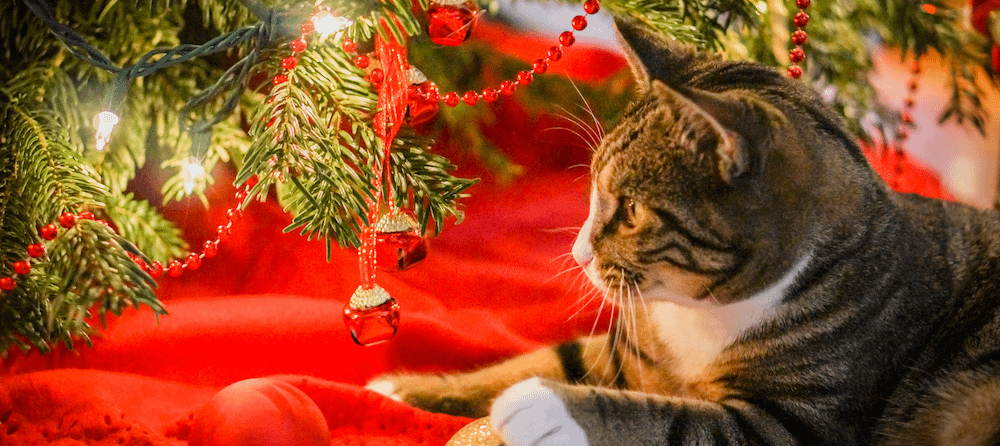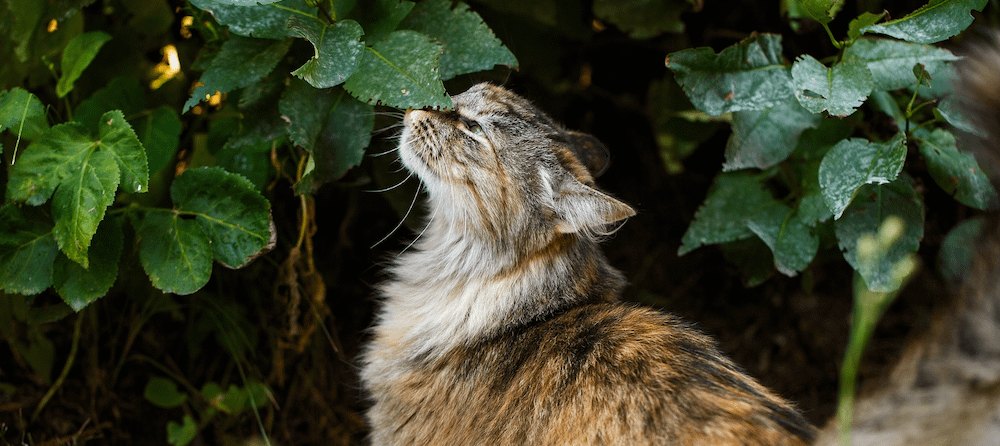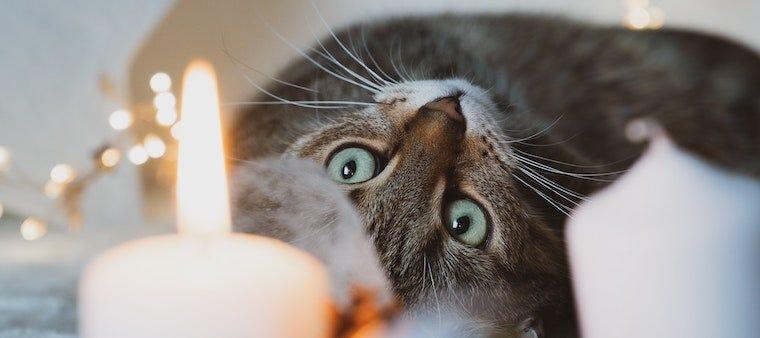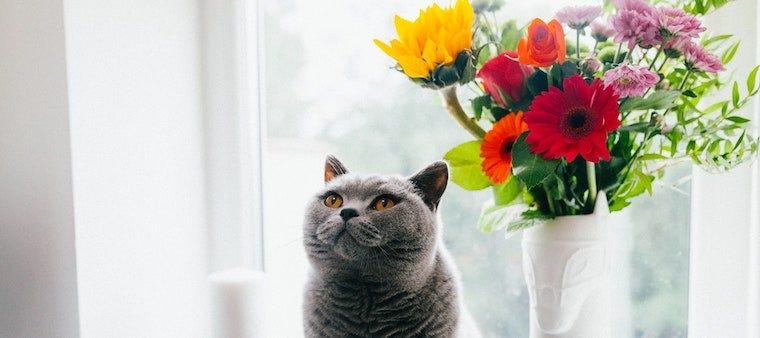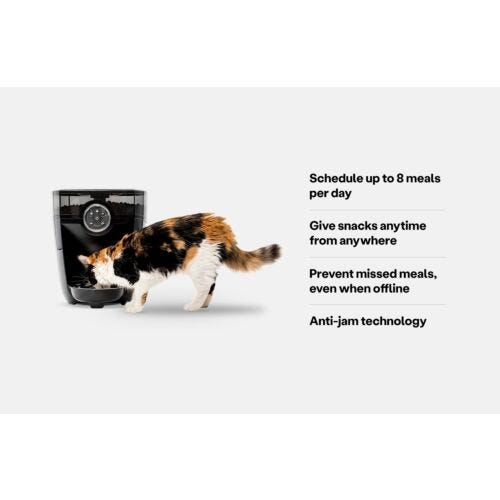An unexpected burden that falls on pet parents during the holiday season is making sure our animals don’t wage war against the festive decorations around the house—in particular, the Christmas tree. Instead of standing as a symbol of light and joy, the tree can become a source of frustration and even peril. So is there such a thing as a cat-proof Christmas tree? Find out for yourself by following these tips.
Go artificial
Christmas tree purists may be quick to reject our first tip, but hear us out: Real trees pose real temptations—and real risks. Needles can cause injury if chewed or swallowed; and even if they do go down smoothly, your cat may experience vomiting, diarrhea, and lethargy due to the mild toxicity of such trees.
Furthermore, real trees require water bowls at the base. More than likely, your cat will treat this water bowl as just another place for a drink. Tree water is often treated with additives such as fertilizer, aspirin, and other harmful ingredients for cats. Even if it’s not treated, the water sitting stagnant invites a breeding ground for bacteria.
Want to keep it real?
If you’re determined to have a real Christmas tree, know that there are upsides (and downsides) to different species of evergreen trees.
For example, spruce trees have sharp, pokey needles that may deter your cat from chewing. But there is potential for injury if your cat swallows enough of those needles.
On the other hand, fir trees have soft needles that aren’t likely to cause actual injury if swallowed. Yet you run the risk of your cat munching away on your tree every day, which can lead to an upset stomach (and a few ugly tree limbs).
Last but not least, make sure the tree’s water bowl is covered with a skirt or lid.

Cover your base(s)
Opting for a sturdy Christmas tree base is the next best thing you can do. The base should be solid and wide. Some people choose to duct tape a piece of plywood to the bottom of their tree stand. You might even consider fixing the base or the tree itself to the wall or ceiling, depending on its height—for instance, by tying a clear fishing line from the top of the tree to a nail in the ceiling above it.
Another tip for a cat-proof Christmas tree is to make the base of the tree unappealing. Place objects with unpleasant textures on the tree skirt, including aluminum foil, double-sided tape, or the more aesthetically pleasing pine cones.
Choose your location wisely
Have a room in the house that you don’t generally allow your pets in? You may want to set up your Christmas tree there. If you don’t, then place your tree in the corner of a room that isn’t very near shelves, furniture, or other potential jumping-off points for your cat. Just in case, keep the breakable décor out of range of a potential toppling.
Use repellents
Certain smells—like citrus—tend to repel cats. Work toward a cat-proof Christmas tree by treating the base of the tree and its lower branches with DIY repellent sprays.
This natural remedy is safe for cats and can also extinguish their curiosity: Mix water with the peels and juice from a lemon, lime, and/or orange. You can even toss a few citrus peels around the base of the tree.
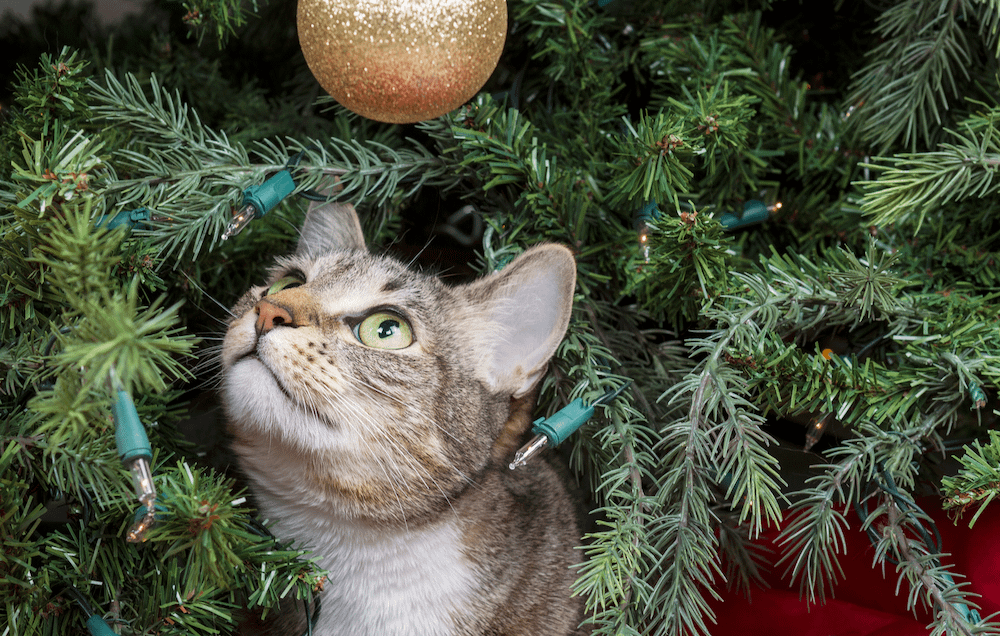
Ornaments 101
Arguably the biggest temptation posed by a Christmas tree is its shiny ornaments. You may want to leave the tree bare for the first few days, letting your cat adjust to the new addition in the home.
Once you’re ready to add ornaments to the tree, keep these tips in mind:
- Place breakable ornaments and shiny baubles higher up on the tree where your cat is less likely to bat them down—or skip these ornaments altogether.
- Avoid unwrapped candy canes, cinnamon sticks, and other edible decorations, especially those made of salt dough and chocolate.
- Be cautious of ornaments with loose metal hooks; if one of these hooks becomes detached and is swallowed by your cat, it can cause serious injury.
- Use more wood, felt, and paper ornaments, which aren’t as likely to entice your cat.
- Don’t hang snow globe ornaments. Snow globes often contain antifreeze—so if they break open, this is a serious danger to your pet.
Say no to tinsel and mistletoe
Shiny tinsel draped across the Christmas tree often spells disaster. Tinsel and ribbon may look like toys to your cat, but they pose a very serious risk if ingested. How? They build up into a tangled knot, get stuck in the stomach and intestines, and result in what veterinarians call a linear foreign body. So if you ever see tinsel or another string-like object hanging out of your cat’s mouth or butt, do not pull it. Instead, get to a veterinarian as soon as possible.
Most pet parents are familiar with the risks posed by poinsettias (which are somewhat overblown), but many don’t realize that mistletoe is actually a more dangerous holiday plant for your cat. According to the American Society for the Prevention of Cruelty to Animals (ASPCA), mistletoe is toxic to cats and dogs. Consuming mistletoe can cause vomiting, diarrhea, low blood pressure, difficulty breathing, and low heart rate. It’s also a good idea to steer clear of holly, as consuming it can cause vomiting, diarrhea, and depression.
Be cautious with Christmas lights
If "National Lampoon’s Christmas Vacation" taught us anything, it’s that cats and Christmas lights can be a truly dangerous mix. In reality, if your cat chews through an electric cord they're more apt to receive a nasty shock than get totally fried—but this is still something you want to avoid. For a cat-proof Christmas tree, place your strands of lights higher up on the tree, tape any loose wires to the floor, and unplug all lights when you’re asleep or out of the house. If you have a cat that’s apt to chew on cords, it’s probably worth buying cord protectors or cord covers, or even simply running the wires through a cardboard tube.
If you notice your cat drooling or panting, check the nearby lights and cords to make sure that they didn’t burn their mouth by chewing through the electrical current. Pets might also drool from chewing on poinsettias and other toxic plants.
If you use these tips for a cat-proof Christmas tree, it’ll surely make for a merrier holiday season for both you and your cat!

